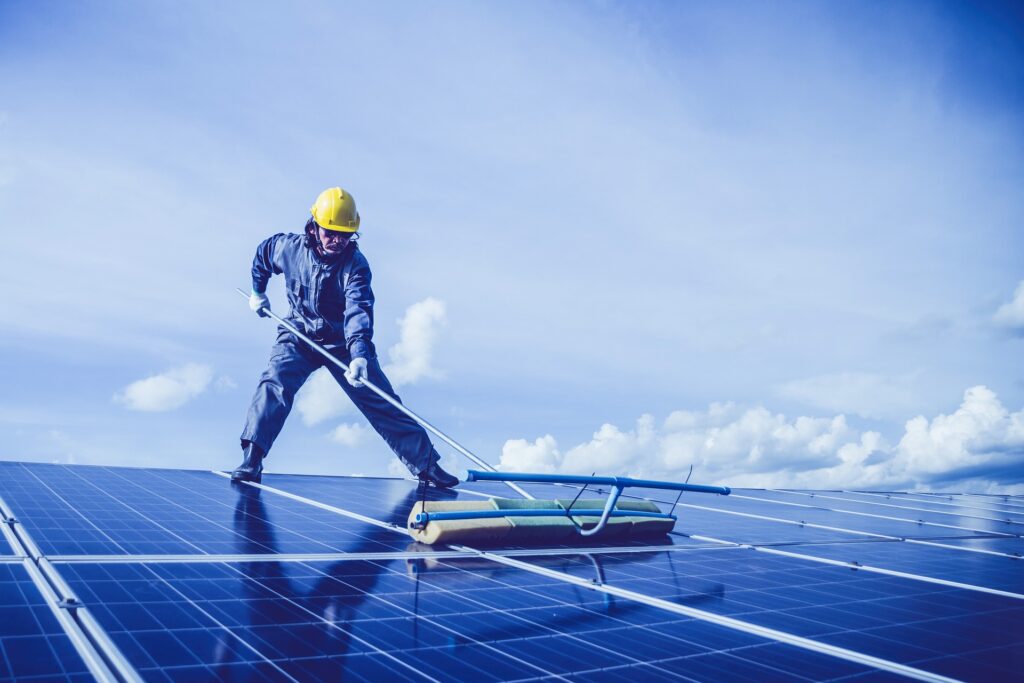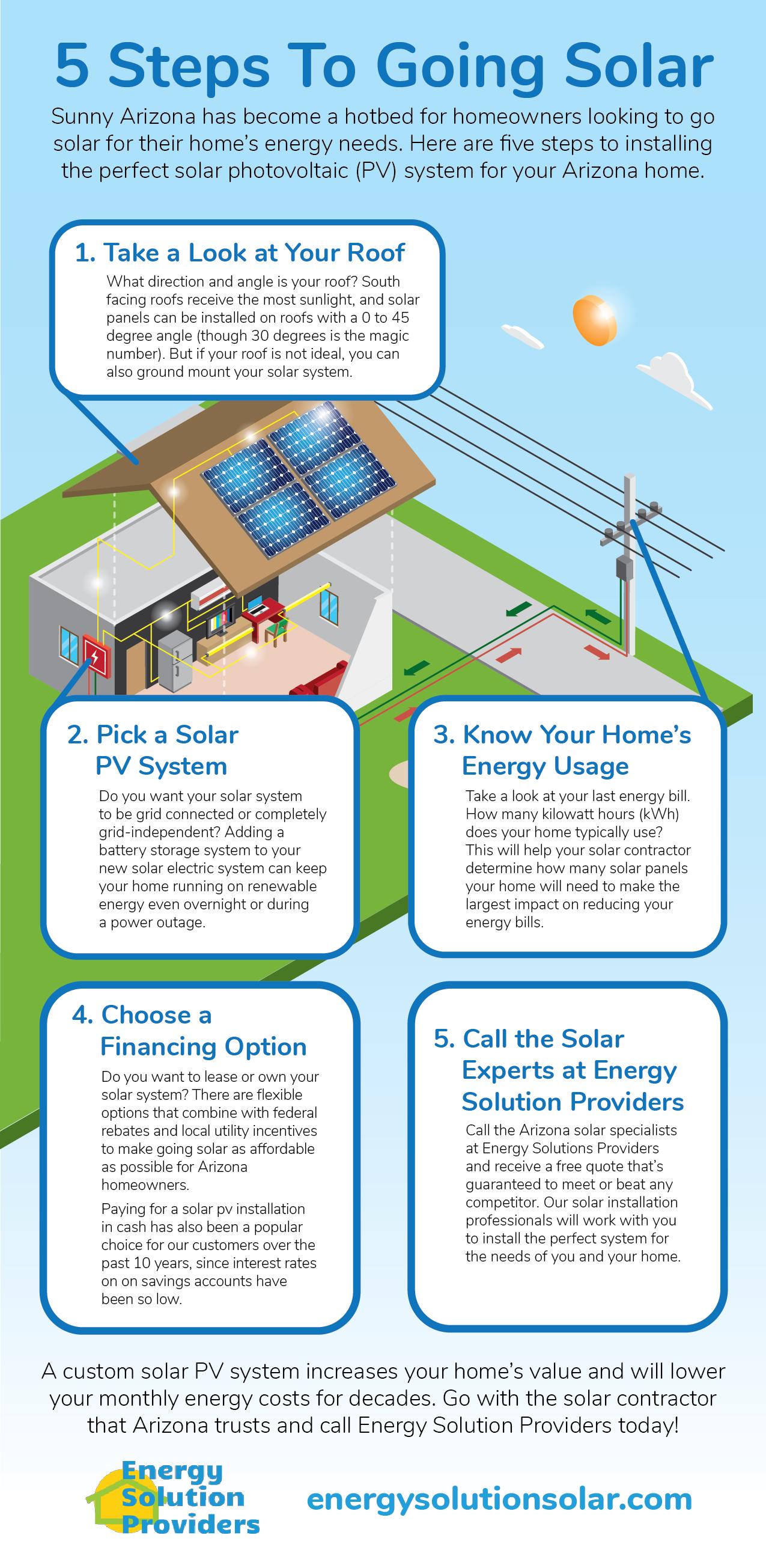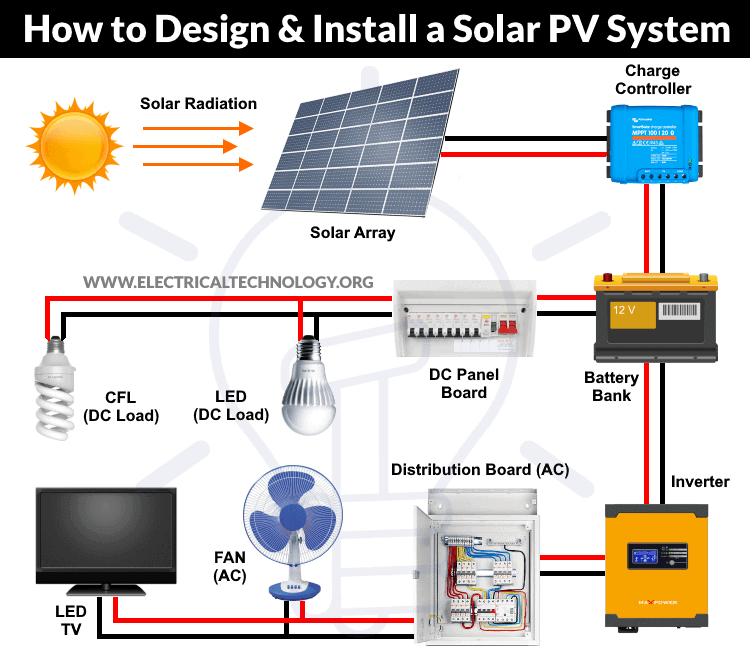To install solar panels step by step, start by determining the position of the panels and their inclination angle. Then, mount the panels on the support structure, ensuring they are secure.

Harnessing the power of the sun through solar panels has become an increasingly popular choice for both homeowners and businesses seeking to reduce their carbon footprint and save on energy costs. Installing solar panels may seem like a daunting task at first, but with the right guidance and a systematic approach, it can be a straightforward and rewarding experience. This guide provides a concise step-by-step overview of the installation process, offering valuable insights for those considering or planning to install solar panels. By following these steps, you can embark on your journey towards a sustainable and efficient energy solution.

Credit: energysolutionsolar.com
Installing solar panels involves several steps to ensure proper placement, wiring, and connection to the electrical system. Here’s a step-by-step guide to installing solar panels:
- Assess Your Roof: Determine if your roof is suitable for solar panel installation by assessing factors such as its orientation, tilt, shading, and structural integrity. Ideally, the roof should be south-facing with minimal shading from trees or nearby structures.
- Calculate Solar Panel Capacity: Determine the size and capacity of the solar panel system needed based on your energy consumption, available roof space, and budget. Consider factors such as the efficiency of solar panels, local weather conditions, and potential future energy needs.
- Acquire Necessary Permits: Obtain the required permits and approvals from local authorities before proceeding with the installation. Building permits and electrical permits may be necessary, depending on your location and the size of the solar panel system.
- Purchase Solar Panels and Mounting Hardware: Select high-quality solar panels, inverters, mounting racks, and other necessary components for the solar panel system. Ensure that the equipment meets industry standards and is compatible with your roof type and electrical system.
- Plan Panel Placement: Determine the layout and placement of solar panels on your roof to maximize sunlight exposure and energy production. Consider factors such as roof obstructions, roof pitch, and spacing between panels.
- Install Mounting Hardware: Install mounting racks or rails on the roof according to the planned layout. Use proper flashing, sealants, and attachment methods to ensure a watertight seal and secure attachment to the roof.
- Wire Solar Panels: Connect the solar panels together in series or parallel configurations, depending on your system design and electrical requirements. Use appropriate wiring, connectors, and junction boxes to ensure safe and reliable connections.
- Connect Inverter: Install the solar inverter in a suitable location near the solar panels. Connect the DC wiring from the solar panels to the input terminals of the inverter. Then, connect the AC output terminals of the inverter to the electrical panel or grid connection point.
- Grounding and Bonding: Properly ground and bond the solar panel system according to local electrical codes and regulations. Grounding helps protect against electrical hazards and ensures system safety.
- Test and Commission System: Test the solar panel system to ensure proper operation and performance. Verify that all electrical connections are secure, and conduct a commissioning test to confirm that the system is generating electricity as expected.
- Monitor Performance: Regularly monitor the performance of the solar panel system to ensure optimal energy production and detect any issues or malfunctions. Use monitoring tools and software to track energy production, system efficiency, and potential problems.
- Maintenance: Perform routine maintenance tasks, such as cleaning the solar panels, checking electrical connections, and inspecting for damage or debris. Follow manufacturer guidelines and recommendations for maintenance to ensure the long-term reliability and efficiency of the solar panel system.

Credit: www.electricaltechnology.org
Frequently Asked Questions On
How To Install Solar Panels Step By Step
FAQ 1: How Much Does It Cost To Install Solar Panels?
Installing solar panels can cost anywhere between $15,000 and $25,000 for a residential system. The price depends on various factors such as the size of the system, location, and brand of panels.
FAQ 2: Do Solar Panels Need Direct Sunlight?
Solar panels don’t require direct sunlight to generate electricity. They can still produce energy on cloudy days, although their efficiency may be slightly reduced compared to sunny days.
FAQ 3: Can I Install Solar Panels Myself?
While it’s possible to install solar panels yourself, it’s recommended to hire a professional installer. They have the expertise to handle the electrical connections, ensure safety, and optimize the system’s performance for better results.
Conclusion
Installing solar panels step by step can be a rewarding and environmentally friendly process. With the right guidance, anyone can successfully set up their solar power system. By following a comprehensive guide like the one provided in this PDF, you can take a major step toward sustainability and energy independence.